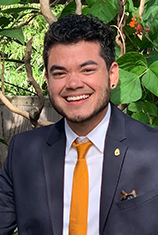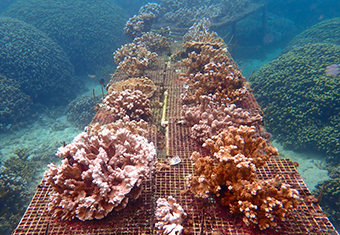

Abstract
Microbial consequences of translocation for coral reef conservation
The greatest heartbreak of coral reef conservation would be if our interventions killed the corals we are trying desperately to save. In a healthy coral, the microbiome (symbiotic algae and bacteria) is stable. However, under stress these partnerships can break down, leaving the coral vulnerable to disease, infection, and mortality. As global coral bleaching events become more frequent, severe, and widespread in response to climate change, it is clear that conservation interventions must be scaled up. One promising new intervention referred to as “coral translocation for assisted gene flow” brings corals from healthy populations into a degraded reef with the goal of introducing new genetic diversity and increasing coral cover. This intervention has yet to be thoroughly evaluated for risks. For example, destabilization of the coral microbiome (i.e., dysbiosis) could result in negative consequences to the donor coral or the surrounding recipient population. I will partner with researchers and environmental managers that are already conducting field conservation projects to investigate the effects of coral translocation on the microbiome over three spatial scales: (1) locally, both between bays in O‘ahu, Hawaiʻi and across the Florida Keys, and then (2) regionally, between Florida and the Bahamas (as part of the first-ever international coral translocation effort) and lastly, (3) globally, by bringing corals from distant regions to a controlled ex situ aquarium system, where I will study the early stages of dysbiosis to determine whether this microbiome breakdown is directional or random. I will use high-throughput sequencing to measure microbiome dysbiosis, identify infectious pathogens and beneficial bacteria as related to coral health (tissue loss/mortality), and identify the limits of microbiome stability when exposed to environmental extremes. I will use these experiments to define broad-scale functional traits of the affected microbes and determine if these trends relate to a coral’s known bleaching phenotype. By providing quantitative measures of dysbiosis and community health, the status of coral nurseries or newly translocated corals can be evaluated. I will determine how risky translocation is by identifying the microbes that may confer resiliency (positive outcome) or disease (negative outcome). Our results from the local and regional experiments will be immediately applicable to active restoration efforts in Florida and Hawaiʻi, while the aquarium experiment will provide baseline data to evaluate risks associated with future interventions.
